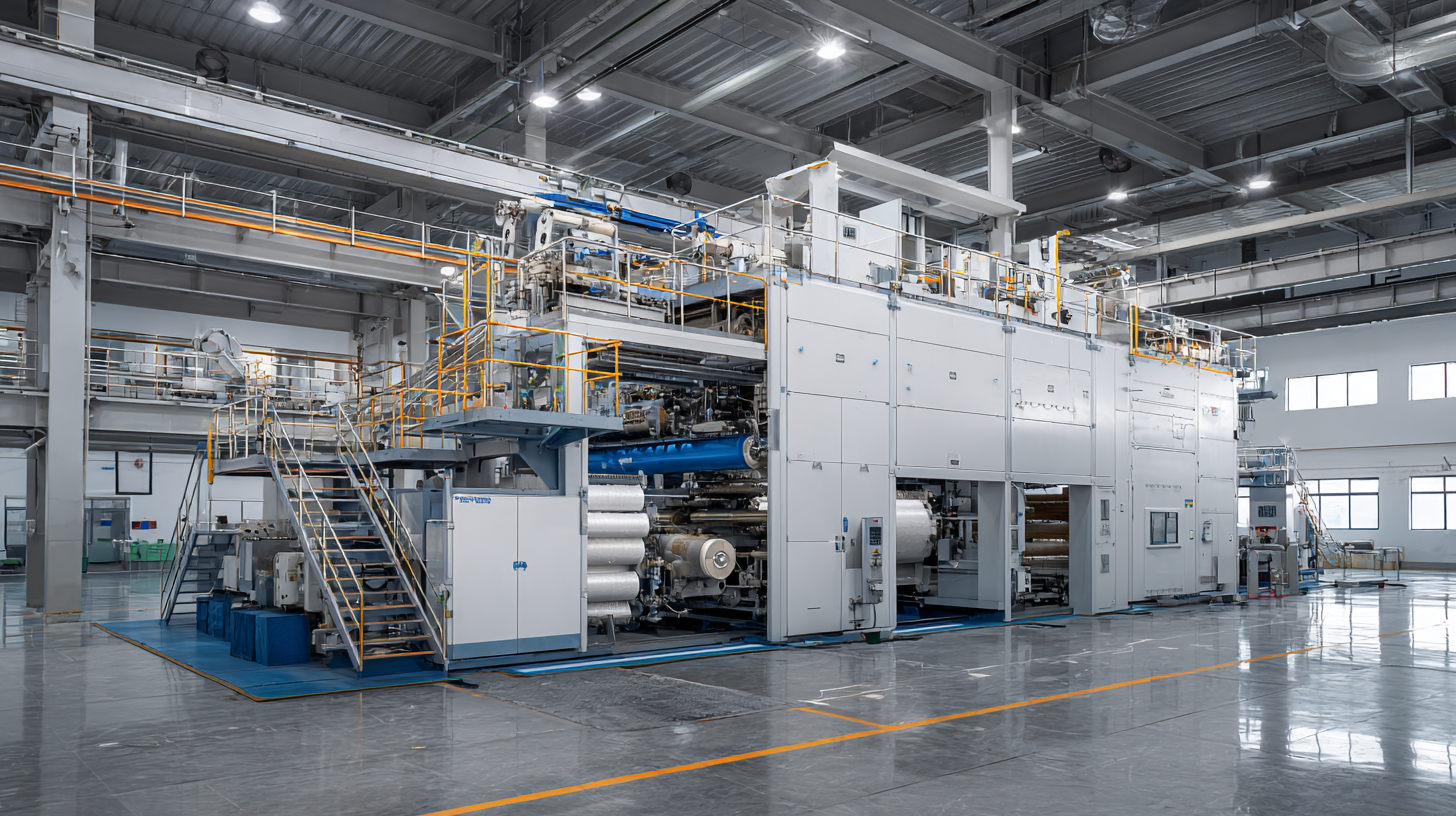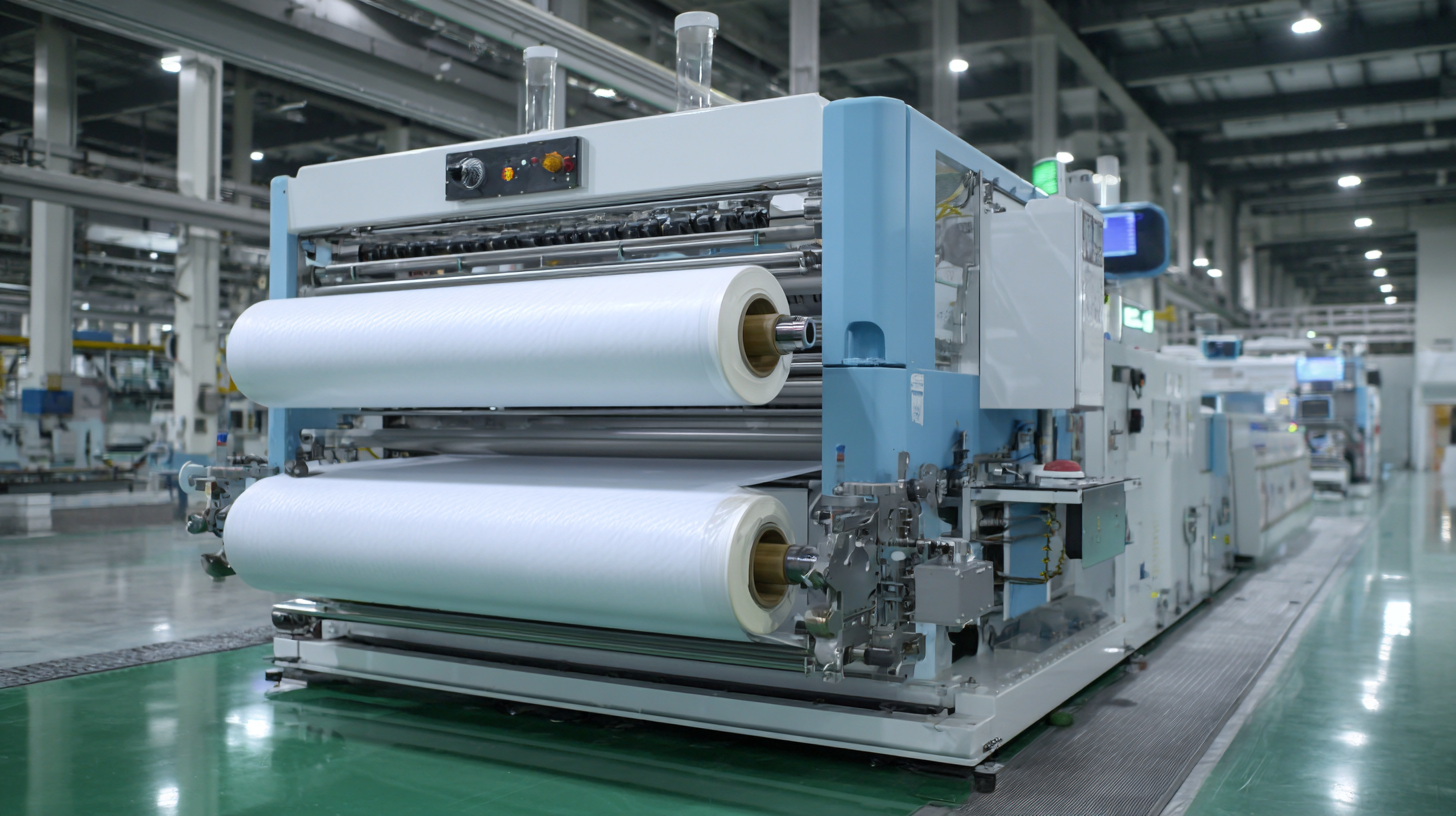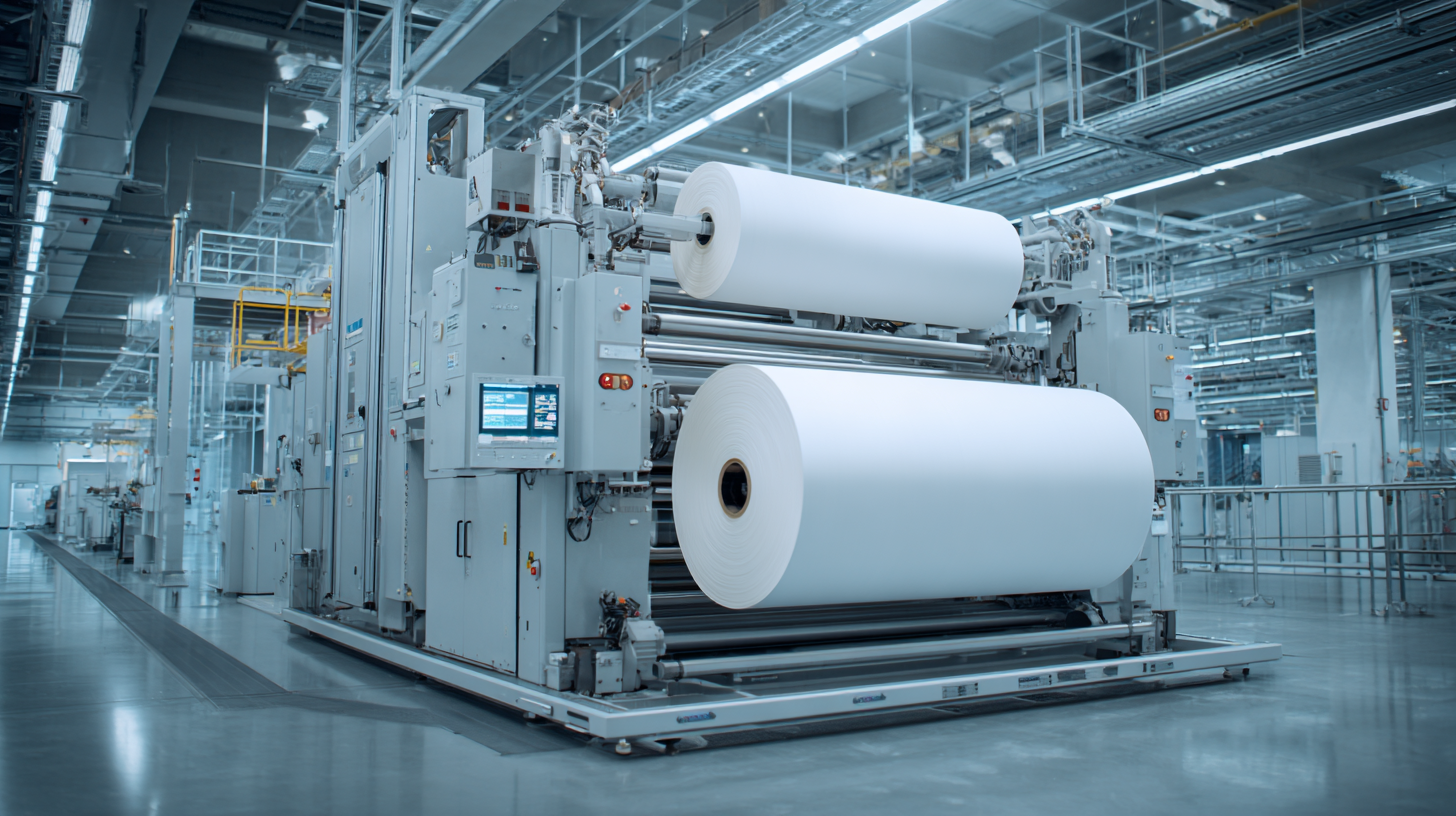Leave Your Message
As we venture into 2025, the landscape of Automatic Nonwoven Equipment is poised for transformative innovations that will redefine industry standards. According to a recent market analysis report by ResearchAndMarkets, the global nonwoven fabric market is projected to reach $39.73 billion by 2026, growing at a compound annual growth rate (CAGR) of 6.3% from 2021 to 2026. This growth is largely driven by advancements in automation technology, which enhance manufacturing efficiency and product quality.

In this context, "中国制造,以品质赢得世界尊重" reflects the ambition of Chinese manufacturers to leverage cutting-edge automatic equipment to gain international respect through superior products. These innovations not only promise to streamline production processes but also offer alternative solutions that cater to evolving consumer demands and sustainability challenges.
As we explore the future of this dynamic sector, we will delve into emerging trends and groundbreaking technologies shaping the next generation of Automatic Nonwoven Equipment.
 The rise of automatic nonwoven equipment is a significant trend reshaping the textile industry as we approach 2025. This technological advancement is driven by the increasing demand for high-quality nonwoven fabrics across various sectors, including healthcare, hygiene, and automotive. Innovations in automation are enhancing production efficiency, reducing labor costs, and improving overall product quality. As manufacturers continue to embrace automation, the integration of artificial intelligence and machine learning into nonwoven production processes is set to become more prevalent, resulting in smarter and more versatile equipment.
The rise of automatic nonwoven equipment is a significant trend reshaping the textile industry as we approach 2025. This technological advancement is driven by the increasing demand for high-quality nonwoven fabrics across various sectors, including healthcare, hygiene, and automotive. Innovations in automation are enhancing production efficiency, reducing labor costs, and improving overall product quality. As manufacturers continue to embrace automation, the integration of artificial intelligence and machine learning into nonwoven production processes is set to become more prevalent, resulting in smarter and more versatile equipment.
In addition to conventional nonwoven applications, automatic equipment is paving the way for alternative solutions that address sustainability challenges. The shift toward eco-friendly materials and processes is gaining momentum, prompting manufacturers to develop nonwoven fabrics from recycled and biodegradable sources. These innovations not only meet consumer demand for sustainable products but also comply with tightening regulations regarding environmental impact. As we explore the future of nonwoven equipment, it is evident that the intersection of automation and sustainability will dictate the next wave of advancements, ultimately transforming how nonwovens are produced and utilized.
The landscape of nonwoven production is rapidly evolving, driven by innovative technologies that enhance efficiency and sustainability. According to a report by Smithers Pira, the global nonwoven fabric market is projected to reach $52 billion by 2025, with innovations in automation playing a critical role in this growth. Automated nonwoven equipment, featuring advanced features such as real-time monitoring and predictive maintenance, significantly improves production accuracy and reduces downtime, leading to increased profitability for manufacturers.
Incorporating cutting-edge technologies such as artificial intelligence and machine learning into nonwoven production processes allows for unprecedented levels of customization and optimization. Businesses can utilize data analytics to streamline operations, adapt to changing market demands, and develop eco-friendly materials. The introduction of alternative solutions, such as bio-based nonwovens, aligns with the growing trend towards sustainability, providing manufacturers with the tools to produce high-performance products while minimizing environmental impact. As we look towards 2025, it is clear that innovative technologies will not only reshape how nonwovens are produced but also position the industry for a more sustainable and efficient future.
This chart illustrates the projected advancements in various technologies affecting nonwoven production processes by 2025. The data represents the expected efficiency improvements across different categories such as automation, sustainability, and material enhancements.
The nonwoven fabric industry is shifting towards sustainability, driven by the increasing demand for eco-friendly alternatives in material production. As manufacturers explore innovations for 2025, a notable trend is the rise of sustainable materials, such as bio-based and recycled fibers. These innovations are not only environmentally friendly but also exhibit high performance, making them suitable for various applications including personal care, healthcare, and industrial uses.
The market for disposable products, particularly wipes and diapers, is projected to witness significant growth driven by this shift. The nonwoven wipes segment is expanding rapidly, fueled by the convenience and versatility they offer across household and industrial applications. Leading companies are investing in advanced technologies to enhance the efficiency and sustainability of their production processes.
In addition, industries are increasingly adopting negative carbon fibers, composed of sustainable materials that help reduce greenhouse gas emissions. These advancements highlight the industry's commitment to addressing environmental issues while meeting consumer demands. With distributors ranging from supermarkets to online channels, the push for sustainable nonwoven products will continue to reshape market dynamics across global regions.
| Dimension | Traditional Nonwoven Production | Innovative Techniques (2025) | Sustainable Alternatives |
|---|---|---|---|
| Production Speed | 1000 m/min | 1500 m/min | 1200 m/min |
| Energy Consumption | 200 kWh/ton | 150 kWh/ton | 120 kWh/ton |
| Raw Material Cost | $800/ton | $700/ton | $600/ton |
| Product Flexibility | Low | High | Medium |
| Carbon Footprint | 1.5 tons CO2/ton | 1.0 tons CO2/ton | 0.5 tons CO2/ton |
As the demand for nonwoven materials continues to rise, manufacturers must future-proof their equipment. Balancing cost and efficiency is crucial in this evolving landscape. According to Smithers, the global nonwoven fabric market is expected to reach $50 billion by 2025, driven by innovations in automation and sustainability. This highlights the need for advanced automatic nonwoven equipment that can not only produce high-quality materials but also adapt to various production demands while managing costs effectively.
Investing in smarter technologies such as AI and IoT can drastically enhance operational efficiency. For example, automated systems can reduce labor costs by up to 30% while increasing output. Furthermore, organizations that implement real-time monitoring can anticipate maintenance needs, potentially cutting downtime by 15%.
Tip: Consider retrofitting existing machinery with smart sensors. This can extend the life of equipment and improve production efficiency without the need for large capital investments. Another approach is to evaluate and integrate alternative sustainable materials into your production line, aligning with the growing consumer demand for eco-friendly products while also reducing material costs.

The nonwoven industry is poised for a transformative shift as we approach 2025, with innovations that prioritize eco-friendly solutions gaining momentum. As environmental concerns become increasingly critical, manufacturers are exploring sustainable materials and production processes.
Biodegradable nonwovens, derived from natural fibers such as cotton, jute, and hemp, are emerging as viable alternatives. These materials not only minimize the environmental impact but also cater to consumers' growing demand for sustainable products.
In addition to material innovations, the industry is embracing renewable energy sources to power production lines. By integrating solar, wind, and other renewable technologies, nonwoven manufacturers can significantly reduce their carbon footprints. Furthermore, advancements in recycling processes are making it possible to reclaim and repurpose nonwoven materials, thus promoting a circular economy. As we look ahead, the nonwoven sector stands at the forefront of eco-friendly advancements, merging technology with sustainable practices to pave the way for a greener future.
